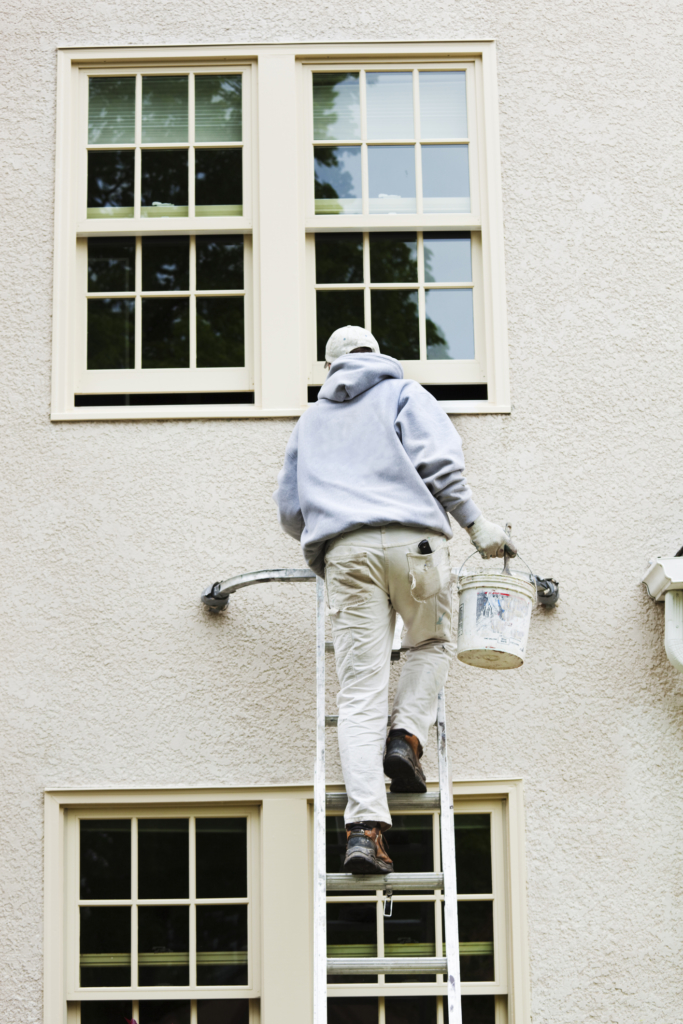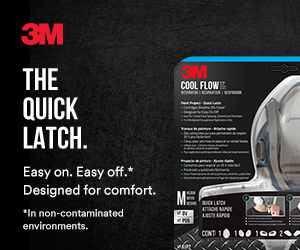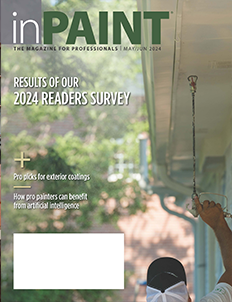4 Safety practices to consider as your crews head into the busy season
 With mild spring-time weather upon us, most of the nation’s painting professionals are heading into their busy season. As crews add hours to their schedules and tasks to their lists, the likelihood for injury also increases. Take these safety practices to heart as workloads ramp up:
With mild spring-time weather upon us, most of the nation’s painting professionals are heading into their busy season. As crews add hours to their schedules and tasks to their lists, the likelihood for injury also increases. Take these safety practices to heart as workloads ramp up:
TIP #1: PRIORITIZE PREVENTING FALLS FROM HEIGHTS
In 2017, 864 workers in the U.S. died as a result of falls, says John Dony, director of the Campbell Institute at the National Safety Council. For all jobs, not just commercial ones, there are OSHA standards to consider. With commercial work, there’s a greater likelihood of workers being mandated to follow specific safety protocols, such as using fall-protection harnesses anchored to something that can support a person’s weight.
Where falls from heights become a greater concern in the painting world is for the small residential contractor, Dony says. “With homes and small residential contractors, that’s where someone is on an extension ladder and may not be tied off at an anchor point,” he said. Providing appropriate safety gear for these situations is critical, and enforcing the equipment’s use is also important.
TIP #2: PROTECT YOUR WORKERS FROM HARMFUL FUMES, CHEMICAL EXPOSURES
Chemicals like paint strippers and heavy coatings can emit dangerous fumes that may harm workers. If a crew is in a hurry, the temptation to overlook, or not use, personal protective equipment (PPE), can leave your team vulnerable.
“Chemical hazards, especially in confined spaces, can really overwhelm someone,” Dony added.
Part of protecting yourself from airborne hazards, such as chemicals, vapors and particulates, involves making sure your safety products—which may include safety goggles, respirators and coveralls—fit correctly, according to 3M safety experts. And don’t overlook comfort. If PPE is not comfortable, an employee may choose to remove the safety equipment while in a hazardous area and, in doing so, may expose themselves to dangers.
TIP #3: TRAIN YOUR WORKERS TO UNDERSTAND CHEMICAL HAZARDS
Safety training is also important when hazardous chemicals are involved. Many small business owners may not understand what to look for when it comes to chemical hazards. OSHA offers its Respiratory Protection Program Administrator training, which is designed for anyone who may oversee safety programs at a company. That administrator can then inform employees of hazards, proper use and maintenance of respirators, and other safety practices related to hazardous exposures while painting, 3M safety experts added.
TIP # 4: WATCH FOR EXERTION-RELATED INJURIES
With so much to do, your crews will work longer hours, and some may do more than their bodies can handle. Exertion-related injuries are common during the long summer days, adds Dony. Add in excessive heat, and crews may be even more prone to injury.
If it’s in the budget, Dony says, there are heat-monitoring wearables, or devices, that can remotely monitor heart activity, respiration and other key heat-related health factors. If there’s a problem, these devices alert administrators, employees or supervisors that a crew member may be experiencing heat exhaustion.
If these devices are not in the budget, regularly alerting crews to the signs of heat exhaustion symptoms, such as dizziness, cool skin with goose bumps, nausea and cramping—while encouraging hydration—is important, according to the Mayo Clinic.
With summer around the corner, business activity will accelerate. Keeping crews informed of the best safety practices and holding them to those standards will only make the season more profitable and productive by avoiding unnecessary injuries.
To read more articles about workplace safety, visit inPAINTmag.com



